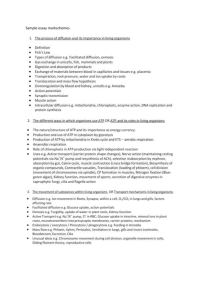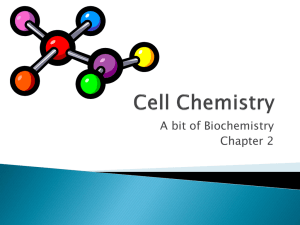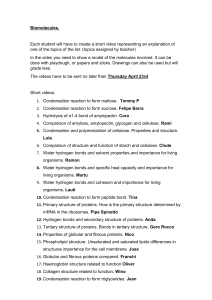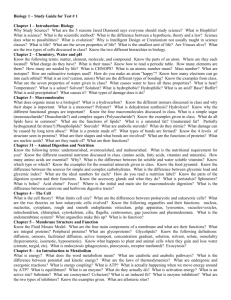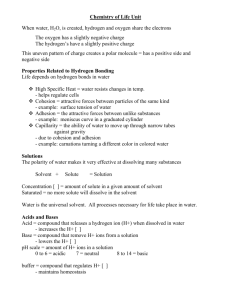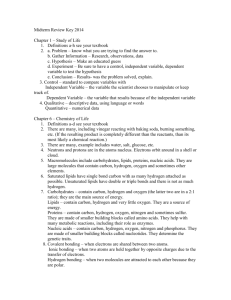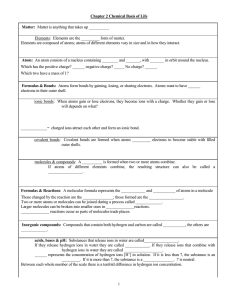BIOS 1300 SI SI WORKSHEET 3 SI Leader: Merrin Jeffries (email
advertisement
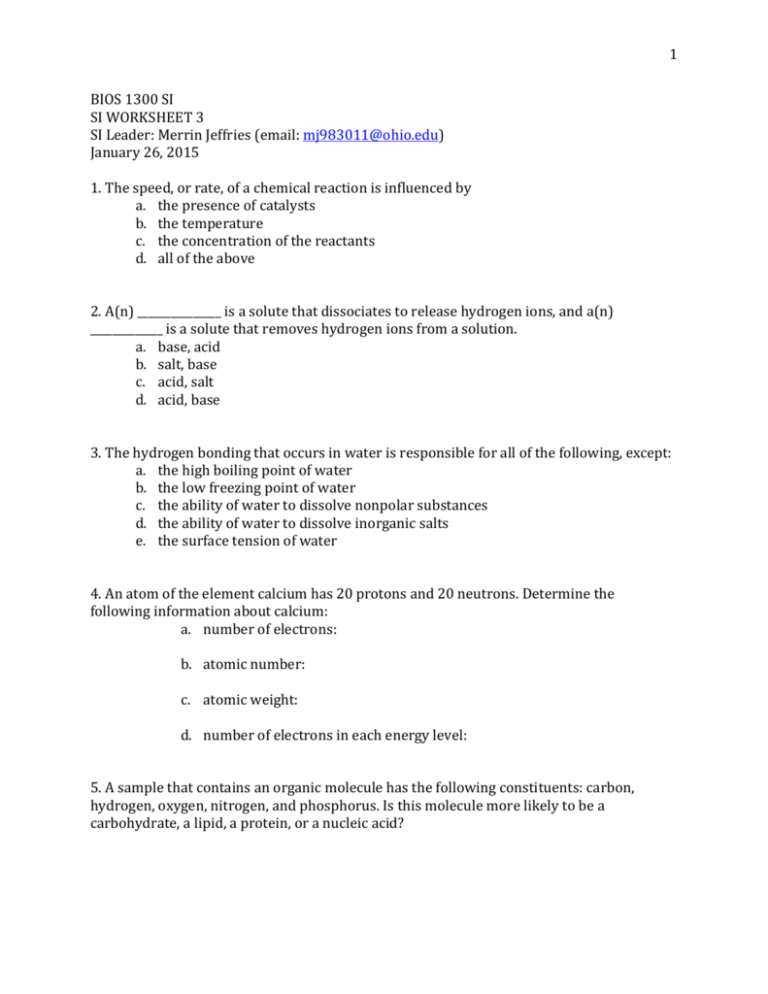
1 BIOS 1300 SI SI WORKSHEET 3 SI Leader: Merrin Jeffries (email: mj983011@ohio.edu) January 26, 2015 1. The speed, or rate, of a chemical reaction is influenced by a. the presence of catalysts b. the temperature c. the concentration of the reactants d. all of the above 2. A(n) _______________ is a solute that dissociates to release hydrogen ions, and a(n) _____________ is a solute that removes hydrogen ions from a solution. a. base, acid b. salt, base c. acid, salt d. acid, base 3. The hydrogen bonding that occurs in water is responsible for all of the following, except: a. the high boiling point of water b. the low freezing point of water c. the ability of water to dissolve nonpolar substances d. the ability of water to dissolve inorganic salts e. the surface tension of water 4. An atom of the element calcium has 20 protons and 20 neutrons. Determine the following information about calcium: a. number of electrons: b. atomic number: c. atomic weight: d. number of electrons in each energy level: 5. A sample that contains an organic molecule has the following constituents: carbon, hydrogen, oxygen, nitrogen, and phosphorus. Is this molecule more likely to be a carbohydrate, a lipid, a protein, or a nucleic acid? 2 6. Explain the differences among nonpolar covalent bonds, polar covalent bonds, and ionic bonds. 7. What three components are required to create the high-energy compound ATP? 1. 2. 3. 8. A certain reaction pathway consists of four steps. How would decreasing the amount of enzyme that catalyzes the second step affect the amount of product produced at the end of the pathway? 9. An important buffer system in the human body involves carbon dioxide (CO2) and bicarbonate ion (HCO3-) in the reversible reactions: CO2 + H2O H2CO3 H+ + HCO3If a person becomes excited and exhales large amounts of CO2, how will the pH of the person’s body be affected? 10. a.)What three basic components make up a nucleotide of DNA? 1. 2. 3. b.)What three basic components make up a nucleotide of RNA? 1. 2. 3. 3 11. How does boiling a protein affect its structural and functional properties? 12. Each Amino Acid consists of 5 components. List all 5 components : 1. 2. 3. 4. 5. 13. List (from simplest to most complex) the four levels of structural complexity that proteins can have: 1. 2. 3. 4. 14. __________________ proteins form extended sheets or strands. These proteins are tough, durable and generally insoluble in water; in the body, they usually play structural roles (example: keratin, collagen) 15. __________________ proteins are compact, generally rounded, and readily enter an aqueous solution. These proteins are enzymes, hormones, and other molecules that circulate in the bloodstream, as well as, the enzymes that control chemical reactions inside cells. (example: Myoglobin, Hemoglobin) 16. Which type of integral protein allows water and small ions to pass through the plasma membrane? 17. What are the major differences between cytosol and extracellular fluid (ECF)? 4 Matching: (Questions 18-26) ____________18. Glycogen A. Amino acids ____________19. Class that includes cholesterol B. Carbohydrates ____________ 20. Building blocks of protein C. Lipids ____________ 21. Building blocks of nucleic acids D. Fatty acids ____________ 22. Sucrose E. Glycerol ____________ 23. Contains C, H, and O in the ratio CH2O F. Nucleotides ____________ 24. Essential for energy reserves and building structural components G. Proteins ____________ 25. Long chains of C and H with a carboxylic acid group at one end ____________ 26. Hemoglobin 27. Use an X to designate which of the following are organic compounds: ______ Carbon dioxide _______ Fats _______ Proteins _______ H2O ______ Oxygen _______ KCl _______ Glucose _______DNA

